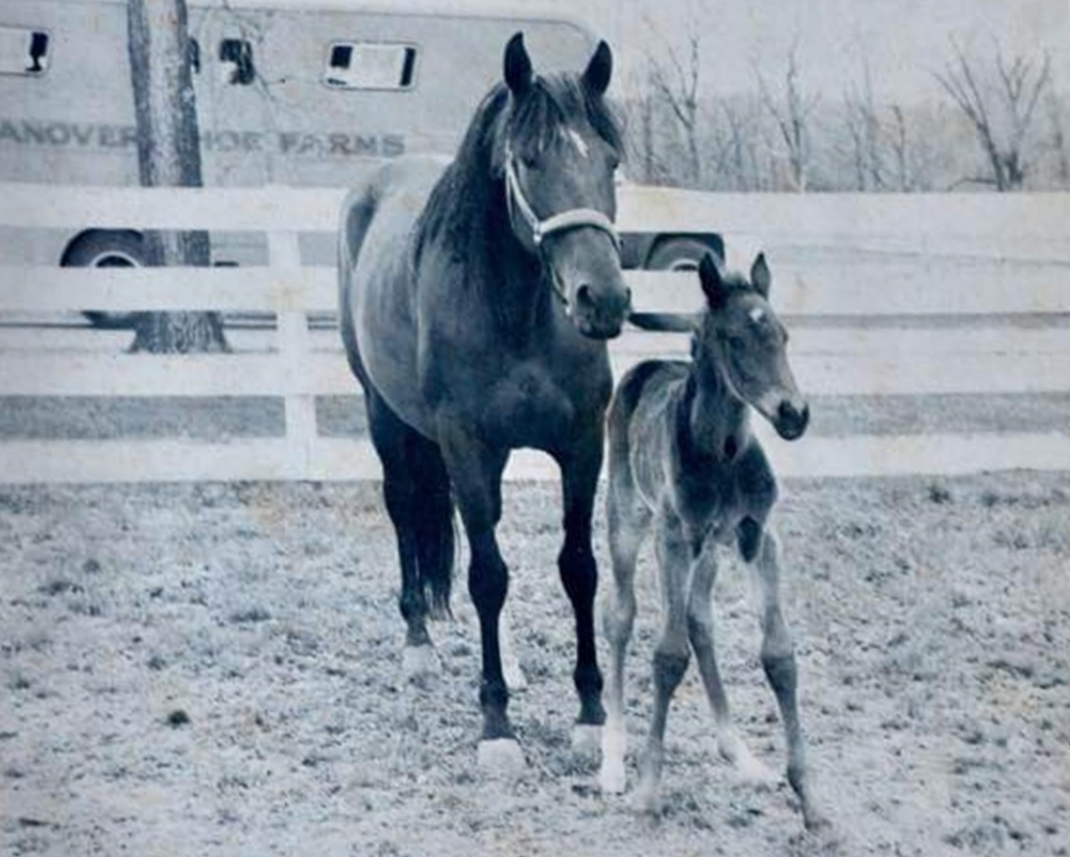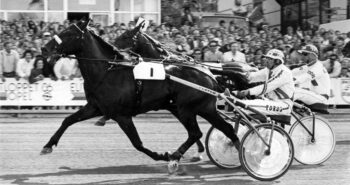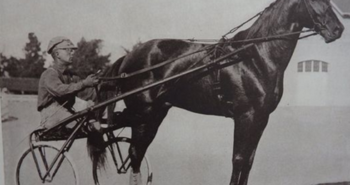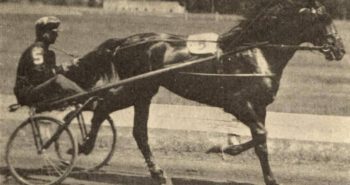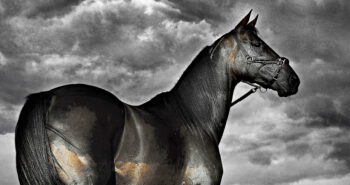You have horses with great pedigrees, then you have those really blue-blooded horses … and then there is Florestan. Despite being a son of the world’s best stallion at the time and possibly the best race mare in history, the brown colt was effectively stateless and a bit of an outcast in his time. The French changed their mind about him, though, and gave him the chance at stud, a move which started the French trotting revolution.
Of all the mighty French trotting queens, although a case can be made for Gelinotte and Uranie, Roquepine is undoubtedly the best. She was the undisputed trotting queen of the world from 1966 to 68, winning Prix d’Amerique x3, the Elitlopp x2, the International Trot x2, Prix de l’Atlantique x2, Grand Criterium de Vitesse x2, Lotteria, Prix de l’Etoile, Criterium des 4 ans, Criterium Continental, Criterium des 5 ans and several other big races. In her Elitlopp elimination in 1967 she was considered so superior she was even excluded from the betting (!) Whether sitting pretty in the lead, parked outside or attacking three-wide, over short or long distances, a mobile starting gate or the French walk-up starting method, over small or big tracks, Roquepine mastered it all. In 1966 she won the Prix d’Europe and Prix Jockey only 48 hours apart… Later that year she won the Gran Premio Delle Nazioni on a track described as a “quagmire.” In reality, Roquepine’s only weakness was the mare herself. When Roquepine was game, though – and she usually was – the mare was pretty much untouchable.
In the 1960s there were some breeders calling for the opening, at least partially, of the French studbook, which had been closed since 1937. All such appeals were turned down by the French association and in particular their powerful and nationalist president Rene Balliere. He was a visionary in several areas, for example, the development of Grosbois into a trotting heaven was his idea. Balliere was a fantastic president for the French association but seeing something good in foreign trotters wasn’t his strongest side. When Henri Levesque, Roquepine’s owner, decided to breed his supreme mare to the best stallion in the US, Star’s Pride, it naturally created big waves. Breeding Roquepine to Star’s Pride was Levesque’s silent protest but the calls for the foal, Florestan, to be admitted to the French studbook upon his birth fell on deaf ears. The French association was crystal clear that it would never happen. However, six years later things would change completely.
The dark brown Florestan was born at Hanover Shoe Farms on Apr 19, 1971, and Roquepine and her son flew to Europe later that year after the mare had been confirmed in foal to Ayres, a mating which produced the very good Granit born 1972. (Since there was also a French-born Granit born that year, Roquepine’s son Granit is often referred to as “Granit HN” with the letters a reference to where he eventually stood stud, Haras Nationaux.) Levesque initially had the idea that Florestan could be flown back to the US at 3 to compete in the Hambletonian and a few other races, but he abandoned that. With no races open to him in France, Levesque sent the blue-blooded youngster to Italian-based German-born trainer Gerhard Kruger, stabled at the Tor di Valle track in Rome.
Florestan proved a massive talent but his background became his undoing. Back then in Europe, age-specific races were only open to domestic horses. Florestan was most certainly not welcome in races for French 3-year-olds and despite being trained in Italy he was not welcome in races for 3-year-olds in Italy either (since he wasn’t Italian-born). He really only had one option open to him: to go against aged horses immediately – and often very good aged horses, too. To top it off, foreign horses were back then often, in fact usually, given a 20 meter handicap intended to favor domestic trotters. For a poor, unstarted 3-year-old it was a a massive challenge and one would expect an inexperienced young horse to buckle under the pressure.
A brilliant trainer
However, as always, the brilliant Krüger knew what to do. Levesque had after all hand-picked the German to train Florestan (and his brother Granit) because of his excellent horsemanship. Winning his first race at the tender age of 15 in 1940, Kruger was a true natural with the horses. WWII almost ruined everything, though: Krüger was drafted and forced to serve in the German war machine in 1944, despite having no political sympathies for Hitler, first in the navy and then at the Eastern front in Russia. There a shell-burst left him for dead with 18 pieces of shrapnel In his body. Six months as a prisoner-of-war at Auschwitz, then controlled by the Soviets, came next.
In an interview in 1962, Krüger said “I was lucky in my bad luck”, referring to the fact that he was in such terrible shape that a Soviet officer told him he was free to go home if he could stand up. Given half-a-loaf of bread and a half-pound of dried beans, Krüger used eight days to reach Berlin, where his mother didn’t recognize him. After recovering he started training horses again in 1947, winning the prestigious Adbell-Toddington race with Blaupeter the same year, and never looked back. He won numerous big races and is recognized as an all-time great trainer in European and world trotting.
During his career, Krüger worked with top French trainer Jonel Chyriacos, Henri Levesque, spent stints in the US and was even welcome in East-Germany to help out harness racing there after the Wall had been built. In 1964 he accepted an offer from the Santi brothers in Italy to train their horses, and Krüger trained many Italian imports from the US, most notably the fantastic Elaine Rodney.
An amazing start
Krüger gave Florestan plenty of time to develop slowly and did not stress him at 3. (The few international races in France and Germany where the colt could have started were closed to three-year-olds, anyway.) Late that summer of 1974, Krüger sent the colt to Fritz Sauer at the Krieau track in Vienna. He prepared Florestan and on October 5, 1974, the blue-blooded three-year-old made his debut by winning the Grosser Dukaten Preis at the Krieau track. The winning time of 1.22,6/2420 meters (2:13 over almost exactly 1 1/2 mile) doesn’t sound impressive, but was a good time for a European 3-year-old back in 1974.
What many don’t know is that Florestan actually raced twice that day: In Austria horses didn’t need to qualify except to race at the Krieau track, where the qualifying requirement was 1.35 (2:32) For some reason Krüger and Sauer hadn’t bothered to qualify Florestan prior to raceday so the colt qualified in the morning and then raced at night – against aged opposition – and won! After the race Krüger, one of the three “German musketeers” – Charlie Mills and Johannes Frömming were the other two – was lyrical and declared Florestan the best three-year-old he had ever trained and driven (something he would also say about Florestan’s one year younger brother Granit the following year).
Eight days later Florestan underlined that claim by winning the prestigious Hunyady race. Though he didn’t meet the best aged trotters in Europe he still had to take on some decent aged horses and the three-year-old again proved superior. After another easy win a month later the Austrians had had enough of his winning ways and on November 23 he was excluded from the betting – quite unheard of for an inexperienced 3-year-old going against aged opposition! Needless to say, Florestan won. As a curiosity, Roquepine and Florestan is the only mother-son combo to both have been placed outside of the betting in harness history.
Exceptional speed
After four wins in as many starts at 3, Krüger felt Florestan was well-prepared for the future, but still picked the colt’s races carefully. Florestan had lots of speed and ability, though not at the level of his legendary dam. From Star’s Pride and the American genes on his paternal side he had also inherited an insane burst of speed. Klaus Kern groomed Florestan in 1975 and 1976 and recalls a horse fighting against the odds all the time.
“The horse was good, though, and could leave exceptionally fast. However, he was essentially stateless and had to go against older horses all the time. He often started behind the field with a handicap. It was common at the time and it was brutal for him,” Kern points out.
Tom Charters, former president of the Hambletonian Society and groom for Delmonica Hanover on her European trip, had the pleasure of seeing Florestan up close and personal. He never forgot the blue-blooded colt as he recalled that Delmonica “raced against Florestan in Munich. He could leave the gate faster than any trotter I ever saw at the point in my life. And for the next 40 years… Until Sebastian K.” Incidentally, Sebastian K’s extreme speed comes from his French sire Korean who most likely got got it from – you guessed it, his damsiresire Florestan.
Although Florestan couldn’t keep the winning streak going he still acquitted himself nicely, winning the Greyhound-Rennen in Mönchengladbach, the Charlie Mills-Memorial in Berlin and the Grosser Preis von Bild (then called the Preis der Schnellsten) in Gelsenkirchen, Germany.
Border trouble
Florestan’s lack of European nationality posed a problem when racing outside of Italy.
“Him being stateless was a big problem when it came to travelling. Every time we stood at a border he had to wait there for two or three days. It was the same with his younger brother Granit, who I also groomed. We just had to wait for a border veterinarian to show up and do all the required tests, and only when he had passed that were we allowed to enter. In the meantime you just had to walk the horse and be patient, there was nothing else do to. I quickly got used to it, though, so it wasn’t a big deal,” Kern recalls.
A career-ending fight
In 1976 the five-year-old Florestan travelled to France and finished third in the Prix de Washington behind elite mare Clissa and Epigramme, and later that fall he won an elimination to the Prijs der Giganten at Hilversum in Holland. He had to bow to three exceptional mares in the final, however, as he finished fourth behind behind Speedy Volita, Dauga and Clissa. That year he also won the Grosser Preis von Niederbayern at Staubing ahead of Espoir Bourbonnais and his younger brother Granit.
At the end of that year, Florestan stood at Konrad Wagner’s stable in Munich when disaster struck. Florestan and another colt got loose and fought almost all night. When the stablehands arrived in the morning they found two injured horses, fortunately without life-threatening injuries, who had worn themselves out during the night. Although Florestan would be able to return to the track at some point, the 1977 winter meeting was now out of the question and the decision was taken to retire him to stud. At 5, Florestan still was lightly raced and had “only” earned 255,761 FF (€ 38,761, close to $ 50,000) and a record of 1.15 (2:00.3). Levesque’s only question was: where the heck could he stand stud? He had some nice wins though still a somewhat limited racing career, but his pedigree ensured he would be welcomed with open arms in every European country.
Sometimes things take funny turns, and one such turn happened in late 1976. The French national stud, the Haras du Pin, was technically there to comply with the wishes of the state and to work to strengthen “the French race.” Yet, the administration had considerably autonomy and in effect could dictate much on breeding matters. So when the key people at the Haras decided that they couldn’t let Roquepine’s son stand stud in another country, they asked that the French studbook rules be changed to accomodate for Florestan’s inclusion. Their thinking was basically that, even though Levesque had angered and upset people in the French federation by breeding his national icon Roquepine to an American stallion and going outside the studbood, the idea of Roquepine’s son standing in Germany or Italy – France’s fiercest rivals – was essentially as heretic as surrendering in 1940.
Back then, pedigree mattered a great deal when it cames to stallion approval and in theory, any French-born son of Roquepine would automatically be approved for stallion duty, even if he wasn’t been able to trot a single step. That was not the case with Florestan, though, as the colt was a good trotter.
One phone call seemingly fixed the whole issue of a studbook closed for 40 years, and Haras du Pin approached Levesque: would he sell Florestan for 750,000 French Francs (roughly €120,000/$150,000)? Henri Levesque immediately accepted and Florestan stood stud at the Haras du Pin from 1977. The Haras du Pin would use this influence and pull to their advantage on a few occasions, and Florestan was the first of five foreign stallions standing stud in France: his younger brother Granit, Kimberland (a son of Nevele Pride), Mickey Viking (a son of Bonefish) and Workaholic being the other four. Additionally Tarass Boulba, a son of Speedy Somolli and French mare Idie, was also welcomed into the French studbook and stallion ranks.
A massive legacy
Though a very good stallion, Florestan was not the best in European history. However, a good case can be made for him being the most influential stallion in French and even European trotting history.
The French trotter in the 1970s was not a homogeneous breed like the US standardbred. There were some very good French trotters but on the whole the breed lacked raw speed – but had strength in abundance, was very powerfully built, had a reputation for often having challenging temper (or being downright mean) and in particularly for being bad-, poor- or, at best, “funky-gaited”. Today the French trotter has plenty of raw speed and nobody complains about a poor gait. Although he is not solely responsible for this big change, Florestan started the revolution and he and his foals also revolutionized the thinking of breeders and trainers in France.
At the Haras du Pin, Florestan got a reputation for having quite the bad temper. His groom Klaus Kern is adamant that Florestan only got like that later in life: “He was super nice and well-behaved. And he was lazy! Later in life, at stud, he got problems breathing and had a cannula inserted to breath. After that he turned a bit mean, but when he was racing he was never a problem,” Kern points out.
When Florestan started at Haras du Pin there was a big demand for his services, but he was limited to 60 mares per year. When the first crop hit the racetracks, interest exploded and some years there were more than 2000 applicants – for 60 spots! The numbers reveal so clearly why this happened. Even though Florestan only had 624 French foals, 494 started. This is a starting percentage of 79,17 % – extremely high by French standards even today and way above any other French stallion back then. If a breeder wanted a foal that raced, breeding to Florestan was by far their best bet. Moreover, 68 foals earned more than the equivalent of €100 000, an impressive 10,90 % – a percentage most stallions today don’t come close to – and this in a time when purses where considerably lower than today. Florestan didn’t produce any superstars but many really nice, solid trotters, generally more medium-sized, who trotted cleanly and efficiently.
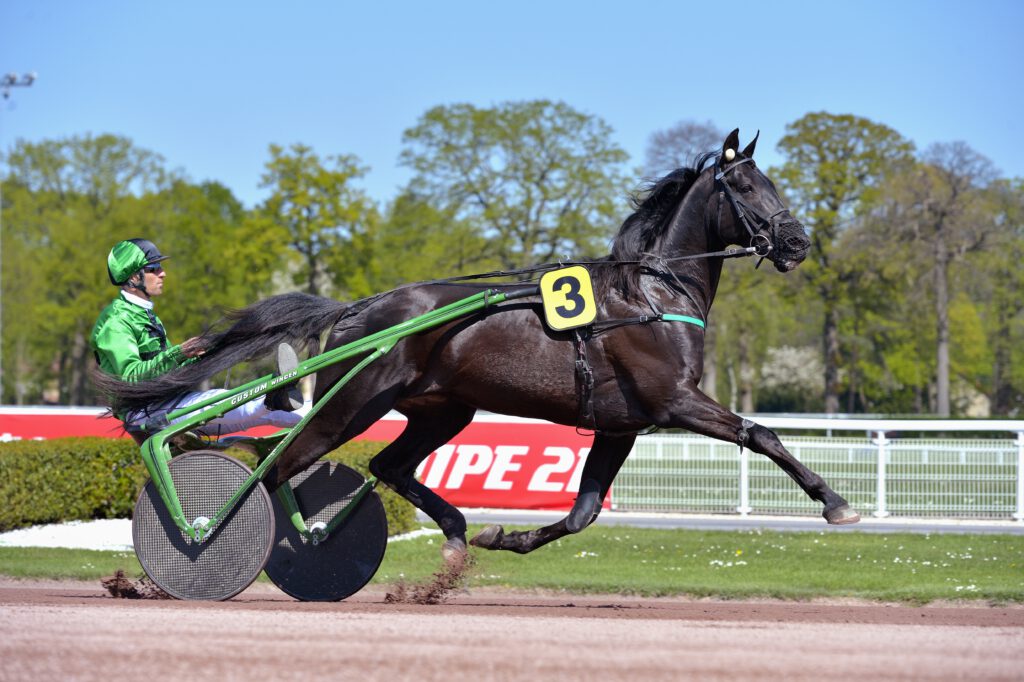
Florestan produced good trotters such as, alphabetically, Baccarat du Pont, Opus Dei, Passionnant, Podosis, Pythagoras, Quito de Talonay, Québir de Chenu and Tonnerre d’Amour. His son Podosis was French champion stallion in 1998. Several other sons also exceled at stud, most notably Quito de Talonay, Passionnant and Baccarat du Pont. 56 sons stood stud and these sons combined produced more than 16000 foals…
In the 1998 Prix d’Amerique something odd, and impressive, happened. The race was won by Dryade des Bois, a daughter of Off Gy, ahead of Echo and Capitole, the latter two by Qlorest du Vivier and Passionnant, respectively. That meant the Florestan was the paternal grandsire of the first three. History repeated itself somewhat in 2009, where Meaulnes de Corta won ahead of Nouba du Saptel and Qualita Bourbon. All three had Florestan as their maternal grandsire as he sired the dams of all three trotters.
Florestan is occasionally found as the only US influence in some otherwise-French-pedigreed stars such as Rapide Lebel and Univers de Pan, both multiple group 1-winners. The latter two are horses with exceptional burst of speed and Florestan’s dark brown color. Florestan’s influence in Korean – and his son Sebastian K – was mentioned above. Add to that the fact that Ready Cash, another horse with both strength and exceptional speed, is linebred on Florestan – and only him. The influence of Florestan is immense and the impact is there forever.
Florestan
Brown colt born in Hanover, PA on Apr 19, 1971. Died in Exmes, France.
Star’s Pride – Roquepine (Atus II)
1.15,0 / 2:00.4f – € 38,991
Breeder: Henri Levesque
Owners: Henri Levesque – Haras de Pin
Trainer: Gerhard Kruger
Drivers: Gerhard Kruger, Konrad Wagner
Grooms: Klaus Kern and others

